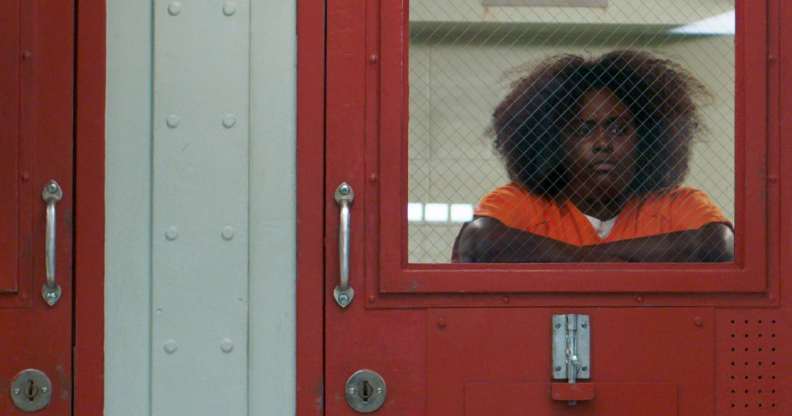Orange is the New Black season 6 review: Ambitious reboot just about sticks the landing

Orange Is the New Black
Orange Is the New Black
Litchfield is back, but not as you know it.
The sixth season of Orange is the New Black, which drops onto Netflix on Friday (July 27), delivers the biggest shake-up to the show since it started.
Following the uneven and divisive riot storyline of Season Five, fans were left wondering how things could possibly go back to normal afterwards.
As season six very quickly establishes, they can’t: the old Litchfield is dead.

Selenis Leyva and Jessica Pimentel (Cara Howe / Netflix)
Without straying too heavily into spoiler territory, the sixth season of the show establishes fairly quickly that the action has permanently shifted from the cozy confines of the prison camp to the maximum security facility next door.
The old set is gone, replaced by a claustrophobic and bleak environment that wouldn’t feel out of place on Prison Break.
The community feel of earlier Orange is the New Black is all-but-dead, as Piper (Taylor Schilling), Taystee (Danielle Brooks) and Red (Kate Mulgrew) contemplate harsh new realities of their new surroundings, where danger and a shiv lurks around every corner.
The new season also takes a wrecking ball to five seasons of friendships and alliances, as circumstances force physical separations, bitter betrayals and impossible choices.

Adrienne C. Moore, Taylor Schilling, Selenis Leyva and Natasha Lyonne (Cara Howe / Netflix)
While sometimes tough, these decisions also allow the show to break out of the racially-segregated groupings of earlier seasons, and some of the season’s best moments come out of unlikely pairings of existing characters who have barely had so much as a scene together previously.
Relocating the show to the max facility is also an opportunity to inject new blood into the show with possibly the largest influx of new characters to date. This has clearly come at a cost, as the returning cast is trimmed down to its core – with some notable fan favourites cast aside or reduced to walk-on cameos to make way for the new arrivals.

Yael Stone and Natasha Lyonne (JoJo Whilden / Netflix)
The new inmates of max are, frankly, unlikely to win anyone’s hearts.
Warring sisters and gang leaders Carol (Henny Russell) and Barbara (Mackenzie Phillips) lead the villainous new arrivals, alongside the psychopathic Madison (Amanda Fuller) and enforcer Daddy (Vicci Martinez) – who may or may not be a transgender man.

Vicci Martinez as Daddy (JoJo Whilden / Netflix)
The show does a surprisingly bad job explaining Daddy’s gender identity, given the sensitive portrayal of Sophia Burset (Laverne Cox) in earlier seasons, and there’s no real clarity on the issue as the comments of several inmates hit bum notes.
There’s also new guards to contend with. The show would be hard pushed to surpass the brutality of the now-dispatched Piscatella, but season six provides yet another gaggle of standard A-holes in blue uniforms, plus the obligatory one-or-two-with-redeeming-features.

(JoJo Whilden / Netflix)
Showrunner Jenji Kohan has made no secret of her disappointment with season five, and many of the bigger changes seem tailor-made to try and remedy some of the show’s more cumbersome baggage.
Given this, it’s a bit surprising that the minutiae of what happened during the riot lingers like a bad smell throughout the entire season – and up until the very last episode you will be straining to remember (or care) what happened a year ago.
That’s not to say the reboot is a failure. The darkness allows for some wonderful light moments, and the refresh allows the show to get political in all the right ways, as Taystee comes close to finally displacing Piper as the show’s true main character.

Adrienne C. Moore and Danielle Brooks (JoJo Whilden / Netflix)
The show also does a good job of bringing some long-dangling plot lines to a decisive conclusion, in a way that clears the deck for more interesting things to come, with a seventh season already ordered.
Not everything in this reboot season lands, but the rich dialogue and compelling characters at the show’s core make it a compelling 13 hours of TV.
Season six of Orange is the New Black is coming to Netflix on July 27.

